Underground City of Noushabad: The Lost Wonder
Deep beneath the desert sands of Noushabad, a small town just north of Kashan, lies a hidden treasure, a mysterious underground relic that has captured the imagination of archaeologists and adventurers alike.
The underground city of Noushabad, also known as Ouee or Ouyi, was constructed over 1500 years ago to serve as a refuge for women, children, and the elderly during times of war and invasion.
Centuries later, this ancient underground city has been uncovered, revealing a complex network of tunnels, chambers, and wells that stretch for miles on three levels allowing the inhabitants to reach any spot without being seen, making it a secure and safe place to stay. This blog will explore this wonder's history, architecture, and significance.
Noushabad’s History
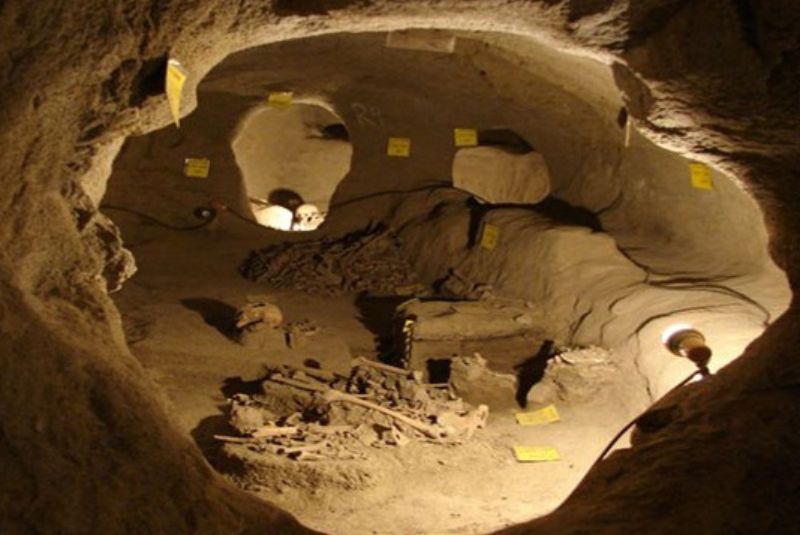
The Noushabad underground city was built during the Sassanid Empire (or Neo-Persian) Empire, which ruled from 224 to 651 for multiple purposes. One reason for its construction was to offer an escape from the extreme daytime temperatures of the central desert region of Iran, where it was located.
However, the primary reason for constructing the underground city was the insecurity and raids that plagued the region in the past. The people of ancient Persia faced constant threats from invaders, and the underground city provided a haven during war and invasion.
The city continued to be extended throughout the Seljuk, Safavid, and Qajar eras. It has saved many lives from the unimaginable brutality of the Mongol invaders in the 13th century and centuries before that from the Arab invaders.
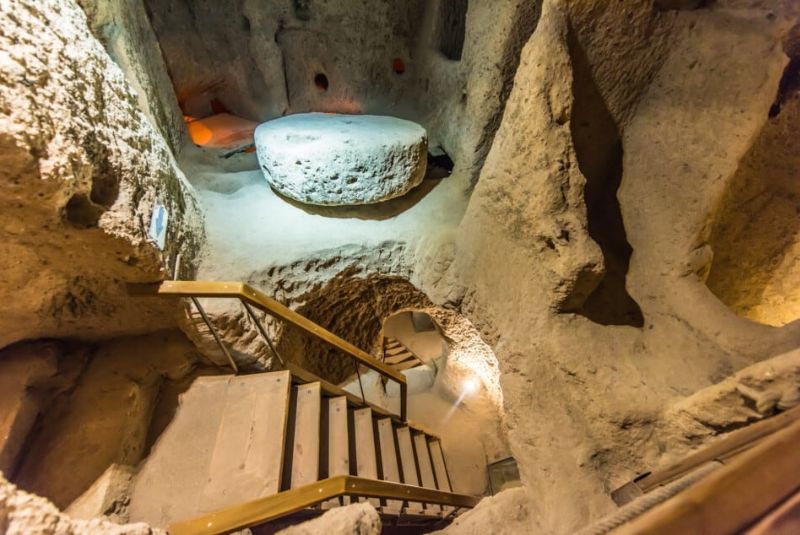
The city was discovered by chance in 2006 when a resident was digging a well in their house when they stumbled upon one of the world's biggest underground cities.
Today, visitors can explore this ancient underground city in Iran and marvel at the incredible architecture and engineering that went into its creation.
Origin of the City's Name
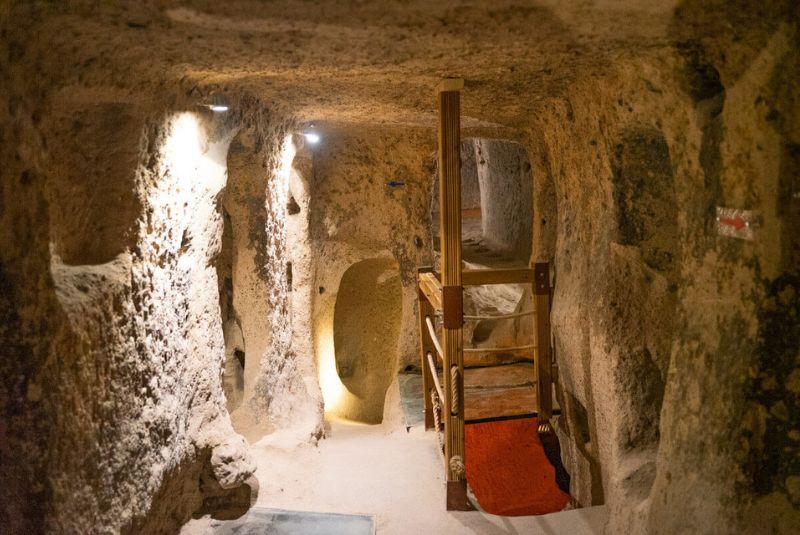
According to ancient lore, one of the Sassanian kings was passing through the area and stopped to drink water from a well and found the water to be exceptionally clear and cold. Impressed by the quality of the water, he ordered the construction of a city around the well. He named it Anoushabad, which eventually became Noushabad, meaning 'city of tasty cold water.'
Noushabad's Architecture
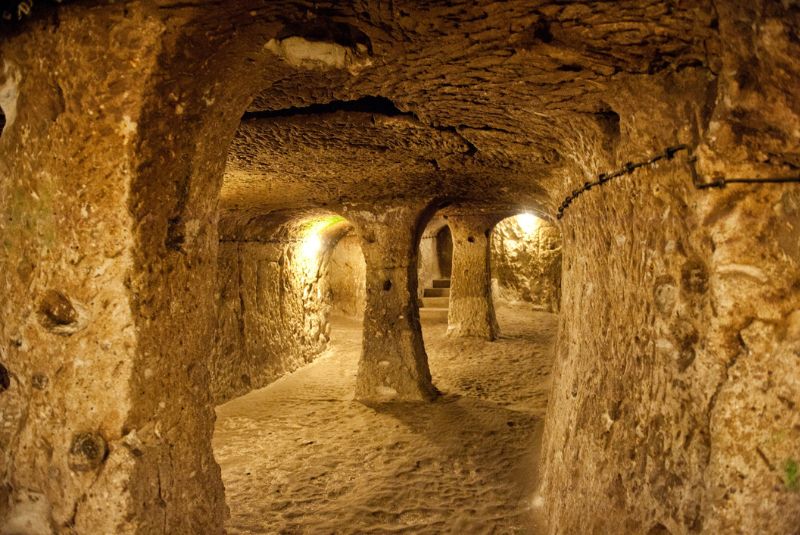
This ancient underground city is a true wonder of architecture, with its unique and intricate design providing both practical and defensive advantages.
The city consists of narrow tunnels and staircases connecting different chambers and rooms spread across three levels that allow people to live and work underground for extended periods without the need to venture outside.
The city's depth varies from 4 to 18 meters, and there were several openings to access it. Some of these openings were located inside people's houses, while others were located in gathering places, such as the main fort just outside the town.
The rooms are carved out of soft limestone rock, with arched ceilings and supporting pillars creating an awe-inspiring sight. It also has fat-burning lights placed in recesses carved in the walls used to light the dark, tangled corridors and chambers.
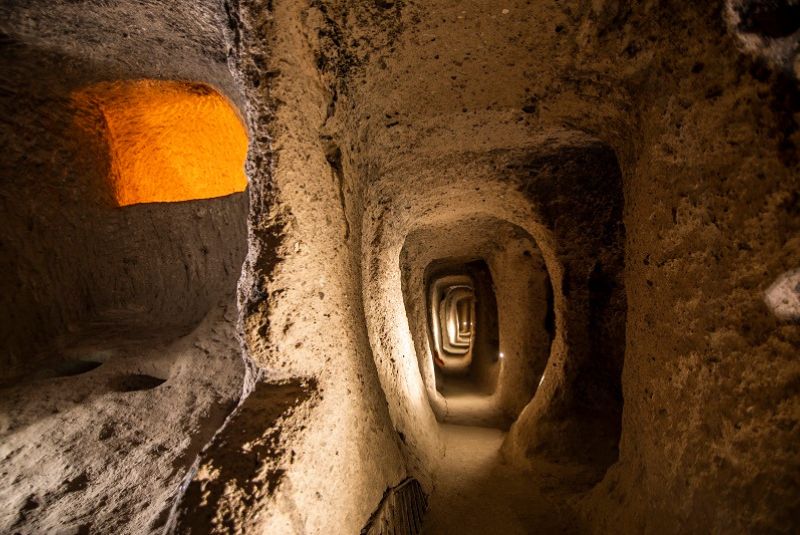
One of the most striking features of the city is its ventilation system. The ingenious design includes a network of air ducts and a labyrinth of rising and falling pathways that allow for the free flow of air throughout the structure, providing fresh air no matter how deep you go.
Another impressive feature of the Noushabad Underground City is its water supply system. The town has several underground wells and channels, providing a reliable water source for its residents.
Defense and Security
What makes Ouyi unique is its defense capabilities. The complicated network of pathways connected by small hatches that could allow only one standing person at a time and the small paths that can only be accessed by crawling make it difficult for invaders to navigate.
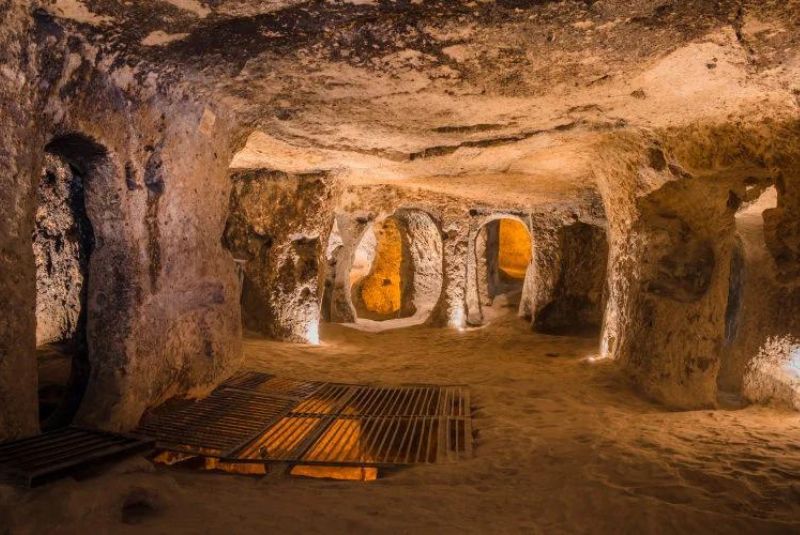
The city's labyrinthine structure also makes access difficult. It gives its residents complete control over potential intruders, allowing them to protect themselves against attackers. In addition, the U-shaped tunnels throughout different levels meant invading soldiers would be forced to attack uphill towards the end of each tunnel, giving the defending soldiers enough time and elevation advantage to dominate their enemies.
Deep holes were dug in the middle of the rooms and covered with rotating stones that would fall if anyone stepped on them.
When hostile forces would raid the area above the city, residents of ancient Noushabad and other local villages nearby would seek shelter within the underground network of Ouyi.
Once inside, they would travel in a single-file line, with the first person lighting the wall-mounted torches and the last person turning off each successive torch, thus confusing the enemy.
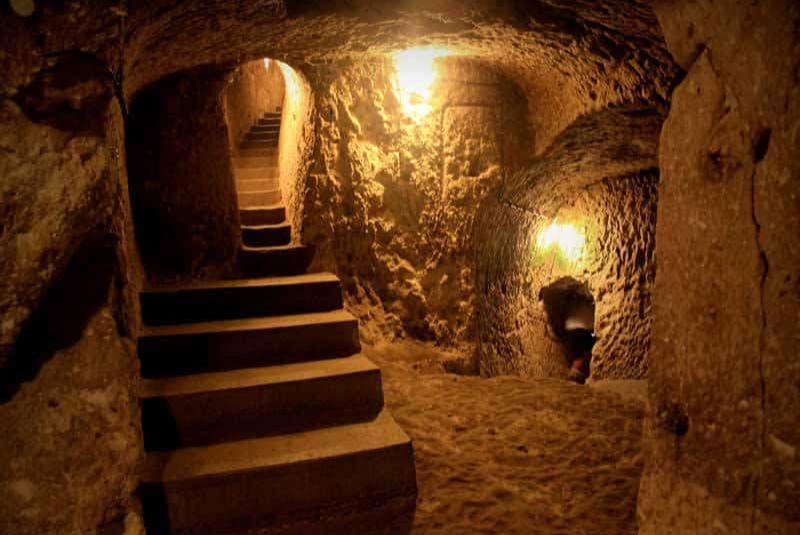
Bottom Line
The underground city of Noushabad is a remarkable relic of the past that showcases the ingenuity and resourcefulness of ancient Persia. This hidden treasure beneath the desert sands of Noushabad was built over 1500 years ago to serve as a refuge for women, children, and the elderly during war and invasion.
Today, visitors can explore this ancient underground city in Iran and marvel at its impressive engineering, architecture, and historical significance.
Share your story!
Comment below and let us know about your Experience.
Your story inspires others!


Comment
Leave a Comment